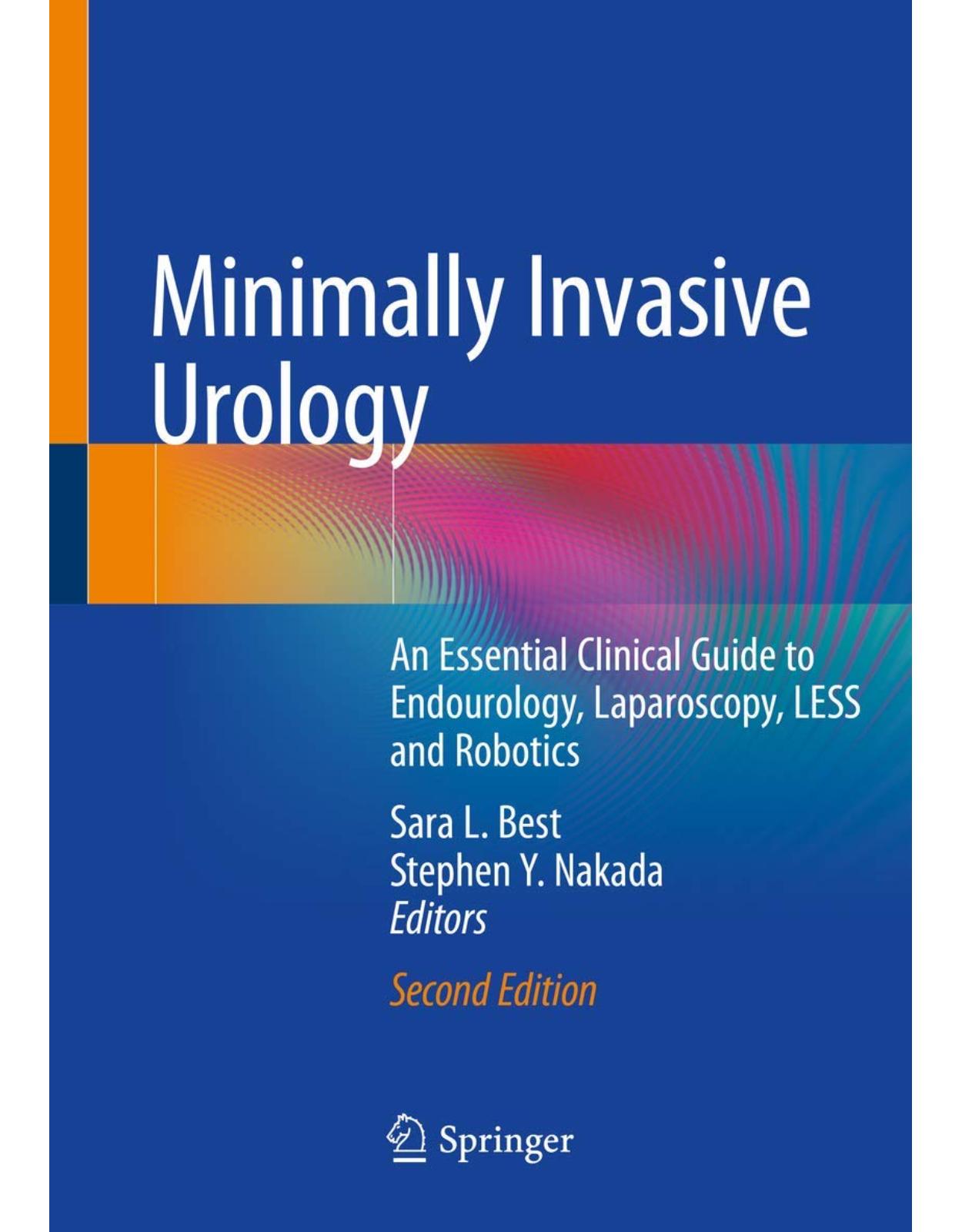
Pelvic Floor Disorders: A Multidisciplinary Textbook
Livrare gratis la comenzi peste 500 RON. Pentru celelalte comenzi livrarea este 20 RON.
Disponibilitate: La comanda in aproximativ 4 saptamani
Editura: Springer
Limba: Engleza
Nr. pagini: 1228
Coperta: Hardcover
Dimensiuni: 21.59 x 6.86 x 28.19 cm
An aparitie: 11 Dec. 2020
Description:
Dramatic improvement in imaging techniques (3D ultrasonography, dynamic magnetic resonance) allows greater insight into the complex anatomy of the pelvic floor and its pathological modifications.Obstetrical events leading to fecal and urinary incontinence in women, the development of pelvic organ prolapse, and mechanism of voiding dysfunction and obstructed defecation can now be accurately assessed, which is fundamental for appropriate treatment decision making. This book is written for gynecologists, colorectal surgeons, urologists, radiologists, and gastroenterologists with a special interest in this field of medicine. It is also relevant to everyone who aspires to improve their understanding of the fundamental principles of pelvic floor disorders.
Table of Contents:
Part I. State of the Art Pelvic Floor Anatomy
1. Pelvic Floor Anatomy
2. Biochemical Properties and Hormonal Receptors of Pelvic Floor Tissues
3. The Integral System of Pelvic Floor Function and Dysfunction
4. The Pelvic Floor: Neurocontrol and Functional Concepts
Part II. Pelvic Floor Imaging
5. Principles and Technical Aspects of Integrated Pelvic Floor Ultrasound
6. Transperineal Ultrasonography: Methodology and Normal Pelvic Floor Anatomy
7. Endovaginal Ultrasonography: Methodology and Normal Pelvic Floor Anatomy
8. Endoanal and Endorectal Ultrasonography: Methodology and Normal Anorectal Anatomy
9. Technical Innovations in Pelvic Floor Ultrasonography
10. Magnetic Resonance Imaging: Methodology and Normal Pelvic Floor Anatomy
11. Dynamic Magnetic Resonance Imaging of the Pelvic Floor: Technique and Methodology
Part III. Obstetric Pelvic Floor and Anal Sphincter Trauma
12. Mechanisms of Pelvic Floor Trauma During Vaginal Delivery
13. Posterior Compartment Trauma and Management of Acute Obstetric Anal Sphincter Injuries
14. Neurogenic Trauma During Delivery
15. Prevention of Perineal Trauma
Part IV. Urinary Incontinence and Voiding Dysfunction
16. Overview: Epidemiology and Etiology of Urinary Incontinence and Voiding Dysfunction
17. Urinary Incontinence and Voiding Dysfunction: Patient-Reported Outcome Assessment
18. Urodynamics Techniques and Clinical Applications
19. Ultrasonographic Techniques and Clinical Applications
20. Biofeedback
21. Selection of Midurethral Slings for Women with Stress Urinary Incontinence
22. Tape Positioning: Does It Matter?
23. Colposuspension and Fascial Sling
24. Injectable Biomaterials
25. Artificial Urinary Sphincter in Women
26. Pharmacological Treatment of Urinary Incontinence and Overactive Bladder: The Evidence
27. Intravesical Botulinum Toxin for the Treatment of Overactive Bladder
28. Sacral Nerve Stimulation for Overactive Bladder and Voiding Dysfunction
Part V. Anal Incontinence
29. Overview: Epidemiology and Aetiology of Anal Incontinence
30. Patient-Reported Outcome Assessment in Anal Incontinence
31. Anorectal Manometry
32. Endoanal Ultrasonography in Anal Incontinence
33. Transperineal Ultrasonography in the Assessment of Anal Incontinence and Obstetric Anal Sphincter Injuries
34. Magnetic Resonance Imaging
35. Neurophysiological Evaluation: Techniques and Clinical Evaluation
36. Behavioral Therapies and Biofeedback for Anal Incontinence
37. Sphincter Repair and Postanal Repair
38. Dynamic Graciloplasty
39. Injectable and Implantable Biomaterials for Anal Incontinence
40. Sacral Neuromodulation for Fecal Incontinence
41. Posterior Tibial Nerve Stimulation for Faecal Incontinence
42. Radiofrequency
43. Other Surgical Options for Anal Incontinence: From End Stoma to Stem Cell
44. Treatment of Anal Incontinence: Which Outcome Should We Measure?
Part VI. Pelvic Organ Prolapse
45. Epidemiology and Etiology of Pelvic Organ Prolapse
46. Patient-Reported Outcomes and Pelvic Organ Prolapse
47. Integrated Imaging Approach to Pelvic Organ Prolapse
48. Transperineal Ultrasound: Practical Applications
49. Three-Dimensional and Dynamic Endovaginal Ultrasonography for Pelvic Organ Prolapse and Levator Ani Damage
50. Magnetic Resonance Imaging, Levator Ani Damage, and Pelvic Organ Prolapse
51. Dynamic Magnetic Resonance Imaging of Pelvic Floor Pathologies
52. Pelvic Floor Muscle Training in Prevention and Treatment of Pelvic Organ Prolapse
53. Use of Pessaries for Pelvic Organ Prolapse
54. Anterior and Posterior Colporrhaphy: Native Tissue Versus Mesh
55. Apical Prolapse Surgery
56. Laparoscopic Pelvic Floor Surgery
57. The Robotic Approach to Urogenital Prolapse
58. Concurrent Prolapse and Incontinence Surgery
59. Management of Pelvic Organ Prolapse: A Unitary or Multidisciplinary Approach?
Part VII. Constipation and Obstructed Defecation
60. Epidemiology and Etiology of Constipation and Obstructed Defecation: An Overview
61. Patient-Reported Outcome Assessment in Constipation and Obstructed Defecation
62. Anorectal Manometry, Rectal Sensory Testing and Evacuation Tests
63. Ultrasonography in the Assessment of Obstructive Defecation Syndrome
64. Echodefecography: Technique and Clinical Application
65. Evacuation Proctography
66. The Abdominal Approach to Rectal Prolapse
67. The Perineal Approach to Rectal Prolapse
68. The Laparoscopic Approach to Rectal Prolapse
69. The Role of Robotic Surgery in Rectal Prolapse
70. Sacral Neuromodulation for Constipation
Part VIII. Pelvic Pain and Sexual Dysfunction
71. Bladder Pain Syndrome/Interstitial Cystitis
72. Pelvic Pain Associated with a Gynecologic Etiology
73. Chronic Idiopathic Anorectal Pain Disorders
74. Female Sexual Dysfunction
75. A Myofascial Perspective on Chronic Urogenital Pain in Women
76. Pharmacological Treatment of Chronic Pelvic Pain
77. Idiopathic Chronic Pelvic Pain: A Different Perspective
Part IX. Fistulae
78. Urogenital Fistulae
79. Rectovaginal Fistulae
80. Emerging Concepts in Classification of Anal Fistulae
81. Ultrasonographic Assessment of Anorectal Fistulae
82. MR Imaging of Fistula-in-Ano
83. Surgical Treatment of Anorectal Sepsis
84. Management of Anorectal Fistulae in Crohn’s Disease
Part X. Failure or Recurrence After Surgical Treatment: What to Do When It All Goes Wrong
85. Imaging and Management of Complications of Urogynecologic Surgery
86. Surgical Management of Complications After Urogynaecological Surgery
87. Endosonographic Investigation of Anorectal Surgery Complications
88. Investigation and Management of Complications After Coloproctological Surgery
Part XI. Miscellaneous
89. Congenital Abnormalities of the Pelvic Floor: Assessment and Management
90. Male Urinary Incontinence: Assessment and Management
Back Matter
| An aparitie | 11 Dec. 2020 |
| Autor | Giulio A. Santoro , Andrzej P. Wieczorek (Editor), Abdul H. Sultan |
| Dimensiuni | 21.59 x 6.86 x 28.19 cm |
| Editura | Springer |
| Format | Hardcover |
| ISBN | 9783030408619 |
| Limba | Engleza |
| Nr pag | 1228 |











Clientii ebookshop.ro nu au adaugat inca opinii pentru acest produs. Fii primul care adauga o parere, folosind formularul de mai jos.